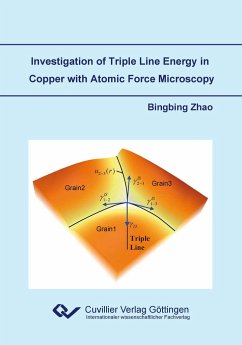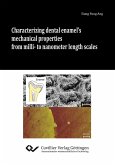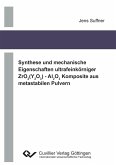In this study, the grain boundary-free surface line tension and grain boundary triple line tension were investigated on copper polycrystals, nanowires, and tricrystals through a thermodynamically correct approach which allows a direct and precise measurement of the line tension. The grain boundary-free surface line tension was determined by comparing the dihedral angle at the root of a flat and a curved grain boundary groove. A measurement of grain boundary triple line tension was achieved by the investigation of the force equilibrium at a triple junction as established by the inclination of the adjourning grain boundary grooves at the root of the triple junction. The experimental technique utilized atomic force microscopy (AFM) to scan the surface topography of grain boundary thermal grooves and triple junctions. The mean value of the dihedral angle on a flat grain boundary groove in copper polycrystals was 161.8°, with a scatter of 2.3°. Assuming a surface energy of 1.75J/m2, the corresponding grain boundary energy was about 0.6J/m2. The grain boundary energies of a low angle grain boundary (9.4°<100>) and a special grain boundary (near ¿=17) were only 0.4J/m2. By comparing the dihedral angles at the root of a grain boundary groove on random grain boundaries and nanowires, the grain boundary-free surface line tension was derived to be (2.1±0.9)×10-8J/m on average. It was demonstrated that the normal shape of a thermal groove and a negative value of the grain boundary-free surface line tension can not be in equilibrium.
Hinweis: Dieser Artikel kann nur an eine deutsche Lieferadresse ausgeliefert werden.
Hinweis: Dieser Artikel kann nur an eine deutsche Lieferadresse ausgeliefert werden.








